“We are related. Nii’kinaaganaa.”
The opening lines of Becoming Kin, a new book by Anishinaabe writer Patty Krawec, speak to our relationship with all living things. And this relationship means that we have responsibilities to each other.
You may unsubscribe from any of our newsletters at any time.
In the following excerpt, from the chapter “Creation: How We Got Here,” she explores how Christian and Indigenous origin stories diverge and why it matters.
Sometimes the centre is created by the act of revolving around it. Creation stories are that kind of centre. We circle around them, coming back to these fundamental narratives again and again, looking for clues about our relationship with the world around us, for clues about how we got here and why we are here.
The Anishinaabe creation story, like that of the Christian narrative, begins with a thought. From this thought comes a breath, and with that breath all things come into existence, like seeds flying into the universe: stars and planets, earth, land, and water, plants, animals, and finally humans. Earth is understood to be a woman, our Mother, who preceded man. From her come all living things, and water is her blood. After all things were made, the Creator takes four parts of Mother Earth and blows into them, and with this breath man is created. Humans are the last form of life to be created, lowered down onto the earth, the least and neediest of all creation. This is a lesson in humility: We are the least of all creation. Creation existed without us, and despite everything we have done to her, she continues to provide for us.
“When all of these beings were created, they promised Gichi-manidoo that they would live together and help all other levels of Creation survive.” This is an important teaching that Wendy Makoons Geniusz draws on in her book Our Knowledge Is Not Primitive. Not only did each successive level of creation need what had come before, but they collectively promised to care for each other. She notes that of all the layers of creation, only the rocks, natural forces, and spirits would survive independently. But they would not be content if they survived alone because they could not keep their promise to ensure survival for all others.f
Nii’kinaaganaa.
The Creator provided all beings, human and not human, with original instructions: information about our responsibilities and obligations. Many traditions have this idea of original instructions. The early commands to Adam and Eve, the words of Moses — these could be seen as original instructions. The words of Jesus form the original instructions to the church. Part of our responsibility as human beings is to remember these and then build our lives around them. To remember ourselves.
Unlike the Christian creation story, the Anishinaabe creation story does not contain a fall or an expulsion. Our expulsion only happens later: at the time of colonization, when the Western world arrives at our doorstep. In our story, Nanaboozhoo, one of the original humans, walks the world meeting and naming the animals. He meets other people and lives in relationship with them. Like in the story of Cain exiled to the land of Nod, there is no explanation for who these other people are; they just are.
The Anishinaabe also have a story of wandering, a circling of sorts, around the lands in which the Creator placed us. We begin in the West and move east through lands of water and wild rice, and then centuries later we circle back, leaving communities dotting the lands and waters above and below the Great Lakes. Our migration was not a search for home; it was a return.
The history of the Christian West revolves around a different centre. Beginning with possibility, it ends in punishment as the first man and woman are cast from Eden. It reads itself into the captivity of the Hebrews in Egypt and their conquest of Canaan, a pattern of expulsion and conquest that would repeat when the church fled Jerusalem and became Rome and then left Europe and subjugated the Americas and the Pacific. It is a story of continual wandering and searching for a place to make a home, often through violence. This is a central theme in literature and movies; from Wagon Train to Star Trek, Americans admire this desire to boldly go and then bravely defend themselves from those who resent discovery. Discovery, after all, has never been good for those it has uncovered. It inevitably leads to exploitation and death.
Christians are unmoored, landless people. Maybe that disconnection from land is what has led to other disconnections. Steve Heinrichs, an activist and writer who calls himself a settler Christian, spoke in an interview about this and his attempt to reconnect: “I don’t simply ask, God what are you trying to say to me through the land? I do something which seems very foreign to me — is coming from Indigenous teachers who are telling me, ‘Ask the water! Ask the river, what’s it saying?’ And so, I’m just trying to be quiet and listen.” I remember learning in church that this world was not our home, that we were strangers in a strange land and that our hope was in heaven. That changes how you look at things. Instead of listening to what the land might have to say for itself, you listen only for what God might be saying through it, reducing it to an empty vessel. It diminishes our investment in the world around us and disconnects us from everything, including people, because we don’t listen to them either. Relationships become a means to an end, a way to evangelize people so they, too, can become unmoored and disconnected from everything except Jesus.
There is another creation story, the one that scientists tell using mitochondria. Mitochondria are tiny powerhouses in our cells that generally carry DNA from mother to child. By tracing mitochondrial DNA, scientists follow maternal lines back in time. They follow breadcrumbs across the globe to identify relationships and uncover migration patterns.
Calling this woman Mitochondrial Eve is a bit strange because if she existed, it was in what is now eastern or maybe southern Africa, not the Tigris-Euphrates River valley. She probably ate dates, not apples, and lived with others like her, not with a man in a garden. Her existence, this ancient mother whose story we read in the fragments of our own DNA, is written over and replaced with a Christian narrative.
Talking about ancient ancestors as African is risky. This claim carries modern assumptions about what it means to be African into a history that did not exist in that way. When we talk about humanity beginning in Africa, it sounds like those evolutionary charts you still see in museums: humanity began in Africa (hunched over and Black) and then progressed to European (standing tall and white). Modern evolution is still the story of colonists, missionaries, and industry bringing civilization to Stone Age people. The history of Europe and now America is told as one of linear progress rather than a story of change. It’s as if these people, like uncontacted Amazonian tribes or the Indigenous peoples of the Andaman Islands, exist outside of our timeline and need to be modernized, rescued.
We also now know that what we’ve believed about our common human ancestry is troubled by other children of this ancient mother — so-called archaic humans, who include the long-past Neanderthals and Denisovans. These are people who no longer exist but whose DNA we carry within us. An insistence on fitting humanity into a single creation story becomes complicated and has consequences for those who don’t share that story.
Christians are unmoored, landless people. Maybe that disconnection from land is what has led to other disconnections.
Ideas about ancient roots, as if there existed some pure lineage from which the rest of us have branched off into lesser beings, are used by some to establish legitimacy over others they see as newcomers or offshoots of the truth, something that Ben Kiernan discusses in his book Blood and Soil. The modern church and the modern U.S. state imagine a straight line connecting them through the Reformation to Rome and, for some, all the way to the garden of Eden. Everyone else needs to be corrected or pruned off. In this chapter, we will see how the church and the United States that it helped to found used that connection to justify their authority over those they believed were wrong and those they “discovered.”
Creation stories speak of emergence. The Genesis creation story places the emergence of people in Mesopotamia, the region of the Tigris and Euphrates, where grain and large cities like Uruk developed. The Anishinaabe creation story places us in the woodlands north of what is now called Lake Superior. The Hopi, in a land of deep canyons, emerged from a hole in the ground. The Inuit emerged from holes in the ice. Our creation stories situate us in a particular place, with particular relationships.
Creation stories, whether Christian or Hebrew, Anishinaabe or Hopi, aren’t meant to be histories — not in the sense that the Western world has invented the idea of history as an unbiased set of facts. They are meant to explain who we are and create a communal sense of self.
The Anishinaabe word for north holds our history: giiwedin, the north, contains the idea of going home. The stem or root word giiwe means to “go home,” and it refers not to the earliest people who filled this place or even to others who left. There is a similar word in Cree, and the oral traditions of the Anishinaabe and the Cree tell us that it refers to the great ice sheets that came south and then returned north — or home — leaving the landscape permanently changed. The word for “wind” is noodin, so giiwedin, which contains a stem from that word, –din, can also be understood as north wind. Our language, Anishinaabemowin, contains history that includes memories of glaciers arriving and then retreating.
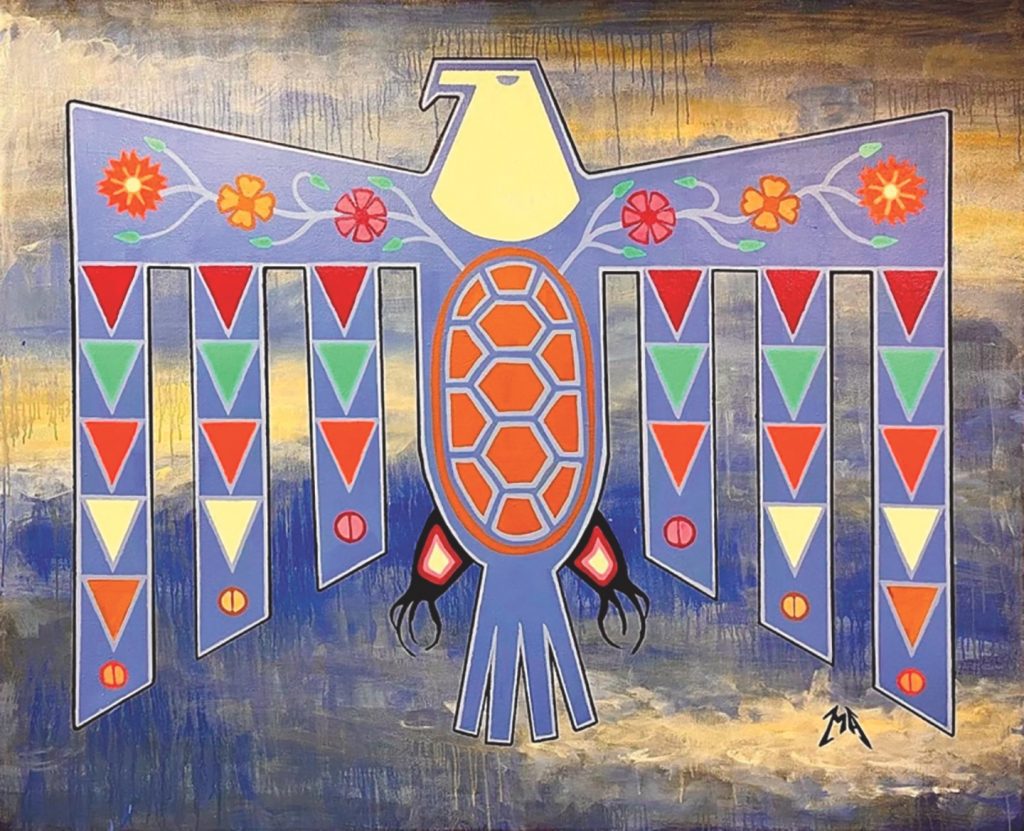
What fascinated me about this when I heard Josh Manitowabi speak about it a few years ago was not simply the etymology. All words contain history and fragments of the deep past that may or may not be present in the contemporary meaning. What fascinated me was that the language speakers knew this etymology. More than simply including the root words go home and wind, the oral history of the Nehiyaw (Cree) and Anishinaabeg included the knowledge of what was going home. We knew about the great sheets of ice long before Enlightenment-era scientists figured it out by studying the erratic dispersal of boulders in the Alps.
The last glacial period, extending from about 115,000 to 11,700 years ago, covered the top half of what is now North America, with maximum coverage occurring about twenty-two thousand years ago. This means that our oral history goes back tens of thousands of years. It goes back far enough that our word for north not only knows about glaciers; it knows they had not always been there.
Across the Americas are many nations whose creation stories and belief systems are sometimes very different. Just as the garden of Eden is located geographically by the Tigris and Euphrates Rivers, our creation stories are also located geographically in places all over the continents. We were used to multiple creation stories, peoples whose circling created their own centres. We understood how to live together with these multiple eddies, circular currents that draw up nutrients from the colder, deeper waters.
This was not true in Europe. At the time that Columbus set sail, Europe was primarily Christian. Ancient Rome had reached to the edges of Europe, and then Western Christianity followed Roman roads, writing its own story on top of earlier stories, and for a thousand years the people of this small peninsula of Asia had the same creation story. When these European Christians arrived in worlds they called new, they were again confronted with new stories, with unfamiliar people, and they had to figure out where we fit in. Who were we? If the Bible talked about everything, as they thought that it did, then surely it must mention us somewhere.
Over and over, these settlers have written themselves on top of our stories, taking small parts of our stories and fitting them into the biblical narrative. Even when they did listen to our stories, it was only to hear fragments of their own story, not to understand ours. They had good news for us, after all; why would they think we might have good news for them? Just as humanity’s ancient mother was transformed into Mitochondrial Eve, we, too, have been recast into the Bible’s story.
Some believe that we are the descendants of Noah’s son Shem, from whom also came Arabs and Israelites. Others believed that we are Israel’s lost tribes, the ten who went into exile and never returned. The idea of people mysteriously vanishing has romantic appeal, whether we are talking about lost tribes of Israel or the Anasazi who lived in what is now the southwestern United States. When people vanish, you can write your own history on top of theirs, replacing them with a story you like better.
Archeology also writes its stories on top of ours. As recently as 1912, the head curator of the Smithsonian Institute was arguing that “Indians” had only been here for three thousand years, and for decades he resisted evidence of an earlier presence. In 1908, George McJunkin, a ranch foreman and former enslaved person, discovered the bones of long-extinct bison and stone tools in Folsom, New Mexico. This find pushed scientists’ understanding of human presence earlier, to ten thousand years before the present. Throughout the twentieth century, additional finds like the Clovis culture — a paleolithic culture identified by a particular style of flaking to create stone tools — would place scattered human presence in North America about eleven thousand to thirteen thousand years ago, just as the Ice Age was ending.
Giiwedin.
Our oral histories contain other clues to human presence in what would become the Americas during the Pleistocene, that geological epoch that lasted more than two million years and ended when the great sheets of ice finally retreated north. Dr. Paulette Steeves is a Cree-Métis paleontologist whose research begins by listening to the oral histories of the people whose land is being excavated and studied. In her book The Indigenous Paleolithic of the Western Hemisphere, Steeves writes about the teratornis, a giant bird with wingspans ranging from twelve to eighteen feet in what is now North America and up to twenty-three feet in what is now South America. Oral histories across the hemisphere talk about thunderbirds: great birds that kidnapped children and fought serpents. Other oral histories talk about large mammals and celestial events that connect in multiple ways with geological, paleontological, and archeological records. Based on her research, Steeves argues for Indigenous presence in North America more than 130,000 years ago, noting that there is no good reason to insist otherwise. Evidence, she points out, is often not found because it is not looked for.
Steeves also argues against the existence of a Clovis culture, which flattens an entire hemisphere of cultures into a monolith based on a single artifact and remains the standard timeframe against which all other finds are measured. This is, she argues, rather like identifying global car users as a single culture. But that is how Indigenous cultures of the Western Hemisphere are often seen: as a monolith. We are seen as a single culture, a single people who haven’t been here that long anyway.
Giiwedin.
The idea that eventually became the Bering Strait theory was first proposed by a Spanish missionary in 1590 to explain how we got here. He speculated that there must be land connecting this new world with Asia and that people had walked across it. A land mass did exist between Asia and North America in the Far North: the now-submerged continent called Berengia. During the Ice Age, the glaciers held so much water that people could live in areas that are now below sea level. There is a field of underwater archeology that excavates these submerged histories.
It is possible that ancient relatives crossed this land mass, possibly hunting mammoth herds and possibly following these herds down a corridor between two glaciers into what would become North America. But there are problems with relying solely on Berengia to explain the presence of people on this continent. There are discoveries of human presence in South America between thirty-five thousand and forty thousand years ago, much earlier than this theory suggests. And human footprints recently found in the White Sands National Park in New Mexico are at least twenty-one thousand years old — ten thousand years earlier than Clovis.
Steeves notes that we accept that about sixty thousand years ago humans crossed an ocean to get to Australia, but we deny the same possibilities for ancient travel to those indigenous to the Americas. We must have walked, bedraggled and forlorn, wandering into the landscape by accident. If animals like camels, which emerged in what is now the Americas, could travel between hemispheres, then why couldn’t humans? New theories continue to challenge old ones, and by the time these words are published, there might already be new archeological information or new ways of reading old information.
Giiwedin.
Indigenous peoples have creation stories that root us in our own places, that tell us who we are and what our relationship is with our Creator and the world around us. Forcing us into a different creation story begins our disconnection from the land. We have always been here: this is how we understand ourselves. And it is true, even if we did migrate from somewhere else more than one hundred thousand years ago. Our own creation stories are filled with migration and travel. But this land is where we emerged as peoples; this is where we developed our political systems and cosmologies. This is where we fell to earth or emerged from the ground or otherwise formed our identities as distinct peoples.
Our words and our stories hold this knowledge. Our origin story is valuable because it not only tells us who we are; it tells us who we can become.
***
Patty Krawec is an Anishinaabe and Ukrainian writer from Lac Seul First Nation. She lives in Niagara Falls, Ont.
Reprinted with permission from Becoming Kin: An Indigenous Call to Unforgetting the Past and Reimagining Our Future by Patty Krawec, copyright © 2022 Broadleaf Books.
This excerpt first appeared in Broadview’s September 2022 issue with the title “How we got here.”

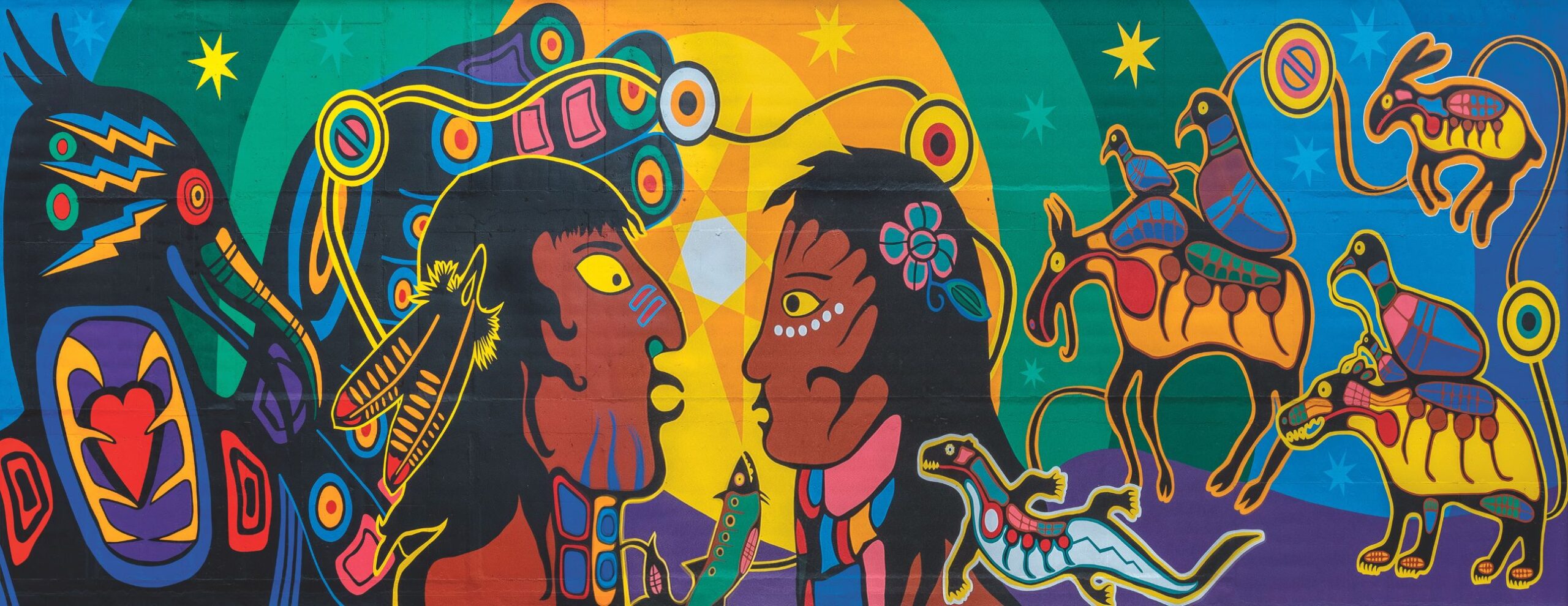







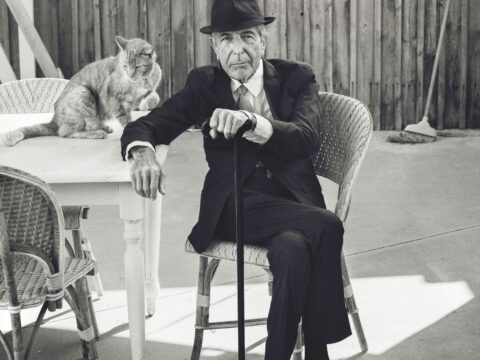
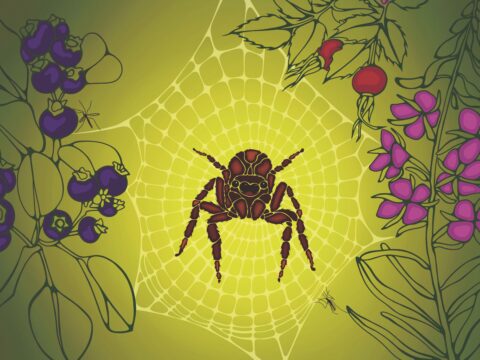
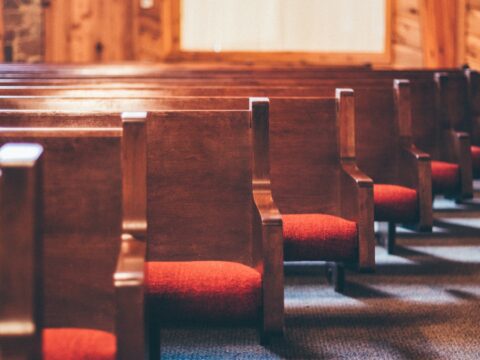
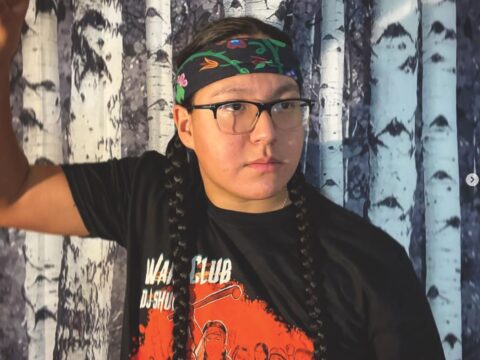
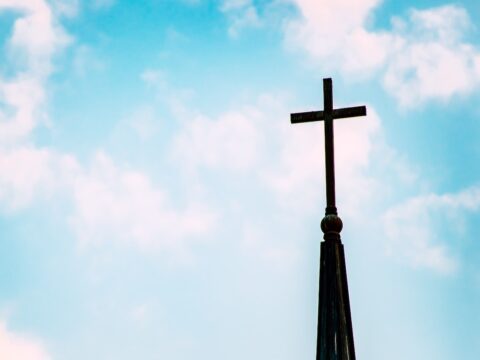
A true Christian does not view this world as home. Home is in Heaven. Philippians 3:20
This does not excuse the way those who call themselves “Christian” abuse the world’s resources, but as the result of a fallen Adam and Eve, it certainly explains “man’s” behavior.
Native creation stories are far from the Christian narrative. We do not believe in “Mother Earth”. We also believe in our relationship to God. We have a personal communion with Him. The world’s situation would soon change for the better if more took the time to have that relationship rather than hating it. 2 Chronicles 7:14
Beautiful, insightful article. I’m buying the book & sharing it.
I add one footnote re. the Christian church in which I have been active all my life. We went astray when the early leadership postulated the doctrine of ORIGINAL SIN & then used it to control the membership and sadly in that wielding of power also got rich.
I believe in ORIGINAL GOODNESS & the wonder of Presence in ALL creation.
GARY from last year:
Are you saying that God DIDN”T create ALL life ??
I do believe that the message of the New Testament brought o us by Jesus was about LIFE here & now and living in the respect of Love one with another. The list of my basis is to long for here & had its foundation in the Old Testament.